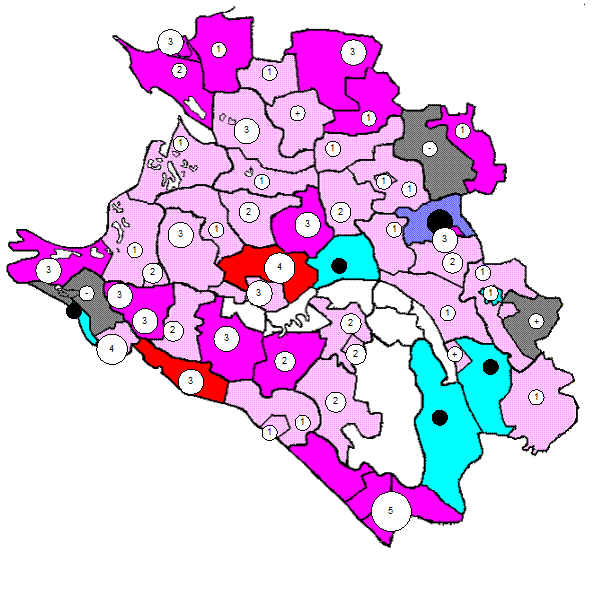Pathology of the great arteries.
1. Etiology and pathogenesis of obliterative atherosclerosis of lower extremities. 2. Etiology and pathogenesis of obliterating endarteritis of the lower extremities. 3. Classification of chronic ischemia on Fountain-Pokrovsky. 4. Methods for controlling blood coagulation system, their characteristics. 5. Methods of examination of the arterial system. 6. Complication of obliterative atherosclerosis of lower limb arteries and methods for their prevention. 7. Leriche syndrome. Classification. Clinic. Diagnostic methods. Treatment tactics. 8. Early postoperative complications of reconstructive operations on arteries of lower extremities. 9. Conservative treatment of obliterating diseases of lower limb arteries. 10. Rehabilitation of patients who underwent reconstructive surgery on the aorta and major arteries. 11. Modern methods aortoarteriografy, complications and methods of prevention. 12. Causes of acute embolism and thrombosis of major arteries. 13. Clinical characteristics of acute thrombosis and embolism of major arteries. 14. Classification of acute lower limb ischemia by VS Savel'ev. 15. Differential diagnosis of acute embolism and thrombosis of major arteries. 16. Surgical tactics and methods of surgical treatment of acute embolism and thrombosis of major arteries. 17. Features of the postoperative period after surgery for acute embolism and thrombosis of major arteries. 18. Conservative treatment of acute embolism and thrombosis of major arteries, the drugs are used. 19. Anticoagulants, fibrinolytic and thrombolytic drugs. 20. Diagnosis of acute disorders of mesenteric circulation. 21. Clinic of acute disorders of mesenteric circulation. 22. Therapeutic tactics in acute mesenteric circulation violation. 23. Chronic disorder mesenteric circulation. Classification. Clinic. Diagnostic methods. 24. Therapeutic tactics in chronic violation of mesenteric circulation. 25. Syndrome of the aortic arch. Classification. Clinic. Diagnostic methods. 29. Clinical and diagnostic utility of multifocal atherosclerosis. 32. Treatment of aneurysms of the abdominal aorta. 35. Open injuries of the arteries. Classification. Clinic. Diagnostic methods. Treatment tactics. 38. Functional tests for the diagnosis of chronic lower limb ischemia. Diseases of the main veins. 2. Clinical manifestations and diagnostic methods of pulmonary artery branches thromboembolism. 5. Clinical manifestations of postthrombotic syndrome. Classification. Diagnostic methods. Treatment tactics. 8. Prevention of deep vein thrombosis of lower extremities in the early postoperative period. 11. Differential diagnosis of deep vein thrombosis of lower extremities and lymphostasis. 14. Clinical manifestations of ileofemoral thrombosis. Diagnostic methods. Treatment tactics. 17. Clinical manifestations of deep-vein thrombosis of shin. Diagnostic methods. Treatment tactics. 20. Differential diagnosis of thrombophlebitis of subcutaneous veins of lower extremities and lymphangites. 23. Clinical manifestations of acute thrombophlebitis of deep veins of the lowerextremities. Approach to treatment. 26. Indications and contraindications for surgical treatment of varicose veins of lower extremities. 29. Conservative treatment of varicose veins of lower extremities. 32. Functional tests to determine the status valve surface, communicating and deep veins of the lower extremities. 34. Clinical characteristics of chronic venous insufficiency of III stage. 37. Clinical characteristics of varicose veins of lower extremities.
|




